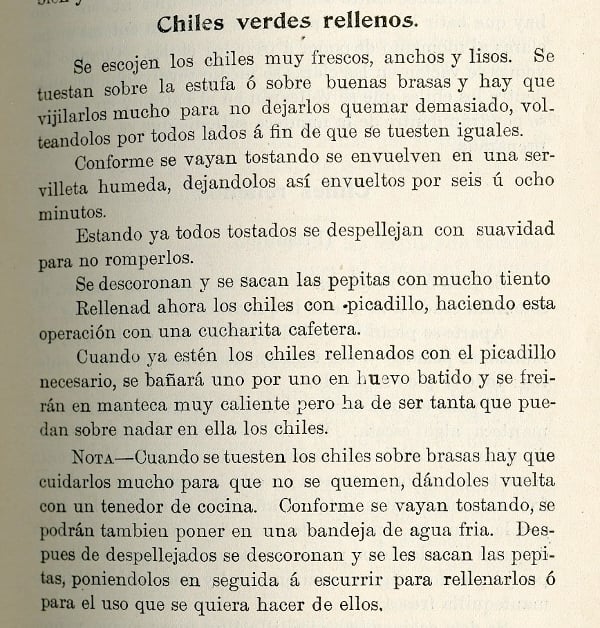Stuffed (4)
By:
December 13, 2014
One in a new series of posts by Tom Nealon, author of the highly popular 2010–2012 HiLobrow series DE CONDIMENTIS. The posts in the STUFFED series are inspired by Nealon’s collection of rare cookbooks, which he sells — among other things — via Pazzo Books. His rare cookbook catalog is available here as a PDF or a full color book (which makes a great stocking stuffer).
STUFFED SERIES: THE MAGAZINE OF TASTE | AUGURIES AND PIGNOSTICATIONS | THE CATSUP WAR | CAVEAT CONDIMENTOR | CURRIE CONDIMENTO | POTATO CHIPS AND DEMOCRACY | PIE SHAPES | WHEY AND WHEY NOT | PINK LEMONADE | EUREKA! MICROWAVES | CULINARY ILLUSIONS | AD SALSA PER ASPERA | THE WAR ON MOLE | ALMONDS: NO JOY | GARNISHED | REVUE DES MENUS | REVUE DES MENUS (DEUX) | WORCESTERSHIRE SAUCE | THE THICKENING | TRUMPED | CHILES EN MOVIMIENTO | THE GREAT EATER OF KENT | GETTING MEDIEVAL WITH CHEF WATSON | KETCHUP & DIJON | TRY THE SCROD | MOCK VENISON | THE ROMANCE OF BUTCHERY | I CAN HAZ YOUR TACOS | STUFFED TURKEY | BREAKING GINGERBREAD | WHO ATE WHO? | LAYING IT ON THICK | MAYO MIXTURES | MUSICAL TASTE | ELECTRIFIED BREADCRUMBS | DANCE DANCE REVOLUTION | THE ISLAND OF LOST CONDIMENTS | FLASH THE HASH | BRUNSWICK STEW: B.S. | FLASH THE HASH, pt. 2 | THE ARK OF THE CONDIMENT | SQUEEZED OUT | SOUP v. SANDWICH | UNNATURAL SELECTION | HI YO, COLLOIDAL SILVER | PROTEIN IN MOTION | GOOD RIDDANCE TO RESTAURANTS.

One reads, in ancient Roman texts, of garum, liquamen, muria, allec. It’s unclear which of these fish sauces were better, and which were made of mackerel entrails and which (if any) of tiny little fish. What is incontestable is the fact that these fish sauces were hugely popular, a defining element in Ancient Roman cookery.
In fact, in Rome, the most popular condiment was fish sauce. The only surviving Roman cookbook was written at the end of the 4th or beginning of the 5th century AD — at the sputtering, gasping end of the Empire. Most of its recipes call for one or another of the fish sauces mentioned above.
As a result of its popularity, the production, consumption, importing and exporting of fish sauce was a not insignificant aspect of the Roman economy. Surviving records tell us that citizens complained about the thick stench of fish parts being liquefied and fermented in a potent brew of salt and spices; as a result, fish sauce factories were moved to the outskirts of town — and outsourced to places like Spain.
According to Pliny, as its popularity grew, fish sauce (he uses the term garum) eventually came
to be made of oysters, sea urchins, sea nettles, crabfishes, lobsters, and the livers of sea barbles. In summe, thus we have devised a thousand waies to dissolve salt with the consumption with the substance of fish, and all to procure appetite to meat and to content the bellie.
The Romans, in other words, had begun turning everything into fish sauce. This is an understandable temptation.

Like a six-year-old playing with matches, testing to see what burns and how well, the Romans left no sea-creature unmelted in their attempt to make the oceans run brownish with fish sauce. However, just as condiment use is all about restraint lest we make (like our young arsonist might) everything taste like ketchup, so too is condiment production. Roman fish sauce became too powerful! Ubiquitous and overused, fish sauce mirrored the decadent decline of the Empire, and was itself, a contributing factor. When the Gauls, Visigoths, Vandals, and even those depraved herring-eating Ostrogoths sacked Rome, its mighty fish sauce industry went under.
Which brings us to America’s burgeoning condiment monoculture.
Ketchup, of course, is axiomatically overused. However, despite a varied past, ketchup never reached the levels of abuse that characterized Roman fish sauce. No, for that we have to look no further than sriracha.

Sriracha, the chili sauce once made from serranos but now from ripe jalapeños (causing a noticeable drop in its bite), was first commercialized in 1980. Its popularity exploded in the last 15 years.
Sriracha is undeniably a versatile sauce, improving eggs, hot dogs, pizza, burritos, and soup in roughly equal measure. However, as its regrettable nickname “hipster ketchup” would suggest, it now shows up everywhere (cue the inevitable Buzzfeed article). Last year, a factory producing the chili sauce sriracha was temporarily forced to shutdown over the spicy miasma hanging over an Irwindale, CA neighborhood — shades of Ancient Rome’s fish sauce problem.
These days, there is a thriving counterfeit sriracha business (sometimes recognizable by the unicorns in place of the roosters), fake Trader Joe’s sriracha with a dragon, variously miscolored spouts, etc. And, because sriracha is a purée and actually not a hot sauce (peppers in a vinegar base), we’ve now entered the debauched stage of DIY sriracha — making it out of everything in the capiscum family. It’s now made out of green, red, serrano, cayenne, arbol, and fresno chiles, bell peppers (the sriracha equivalent of making garum from the livers of sea barbles), etc.
And then there’s New Mexico’s green chile problem.

Every fall in Albuquerque, N.M., in abandoned lots and empty parking lots across the city, green chile is roasted in such profusion that a smoky thickness stretches from the mountains across the Rio Grande and down to the valley where it collects like swamp gas.
In New Mexico, you can get green chile bagles, green chile pizza at Pizza Hut (The Roadrunner), a green chile cheeseburger at McDonald’s, or a green chile enema at Barry’s Casa de Enemas. The green chile is ubiquitous.

In recent years, as the rest of the nation has discovered green chile, demand has exploded and something that was extremely popular in a very local way has gone national. However, because “real” green chile is grown in New Mexico and the proper stuff (hot and broad and deep with flavor) down south in Hatch, NM, and because water is always hard to come by, impostors have emerged like hipsters at a bespoke velocipede festival. Though laws have recently been enacted to try to stem the flow, currently only a small percentage of chile labelled “New Mexican” is actually from New Mexico and a despairingly smaller percentage from Hatch itself.
More likely, you are getting chile from Mexico, or even more likely, chile from China that is imported through Mexico.
All of the above bolsters the following axiom: As foods get more popular, sometimes they really do get objectively worse. They can blunt our palettes, flatten the complexity of our food, and create public health hazards.
Caveat Condimentor!
STUFFED SERIES: THE MAGAZINE OF TASTE | AUGURIES AND PIGNOSTICATIONS | THE CATSUP WAR | CAVEAT CONDIMENTOR | CURRIE CONDIMENTO | POTATO CHIPS AND DEMOCRACY | PIE SHAPES | WHEY AND WHEY NOT | PINK LEMONADE | EUREKA! MICROWAVES | CULINARY ILLUSIONS | AD SALSA PER ASPERA | THE WAR ON MOLE | ALMONDS: NO JOY | GARNISHED | REVUE DES MENUS | REVUE DES MENUS (DEUX) | WORCESTERSHIRE SAUCE | THE THICKENING | TRUMPED | CHILES EN MOVIMIENTO | THE GREAT EATER OF KENT | GETTING MEDIEVAL WITH CHEF WATSON | KETCHUP & DIJON | TRY THE SCROD | MOCK VENISON | THE ROMANCE OF BUTCHERY | I CAN HAZ YOUR TACOS | STUFFED TURKEY | BREAKING GINGERBREAD | WHO ATE WHO? | LAYING IT ON THICK | MAYO MIXTURES | MUSICAL TASTE | ELECTRIFIED BREADCRUMBS | DANCE DANCE REVOLUTION | THE ISLAND OF LOST CONDIMENTS | FLASH THE HASH | BRUNSWICK STEW: B.S. | FLASH THE HASH, pt. 2 | THE ARK OF THE CONDIMENT | SQUEEZED OUT | SOUP v. SANDWICH | UNNATURAL SELECTION | HI YO, COLLOIDAL SILVER | PROTEIN IN MOTION | GOOD RIDDANCE TO RESTAURANTS.
MORE POSTS BY TOM NEALON: Salsa Mahonesa and the Seven Years War, Golden Apples, Crimson Stew, Diagram of Condiments vs. Sauces, etc., and his De Condimentis series (Fish Sauce | Hot Sauce | Vinegar | Drunken Vinegar | Balsamic Vinegar | Food History | Barbecue Sauce | Butter | Mustard | Sour Cream | Maple Syrup | Salad Dressing | Gravy) — are among the most popular we’ve ever published here at HILOBROW.
